Abstract
Three mutants have been isolated in which the normal 24-hour rhythm is drastically changed. One mutant is arrhythmic; another has a period of 19 hr; a third has a period of 28 hr. Both the eclosion rhythm of a population and the locomotor activity of individual flies are affected. All these mutations appear to involve the same functional gene on the X chromosome.
Keywords: eclosion, circadian, rhythms, X chromosome
Full text
PDF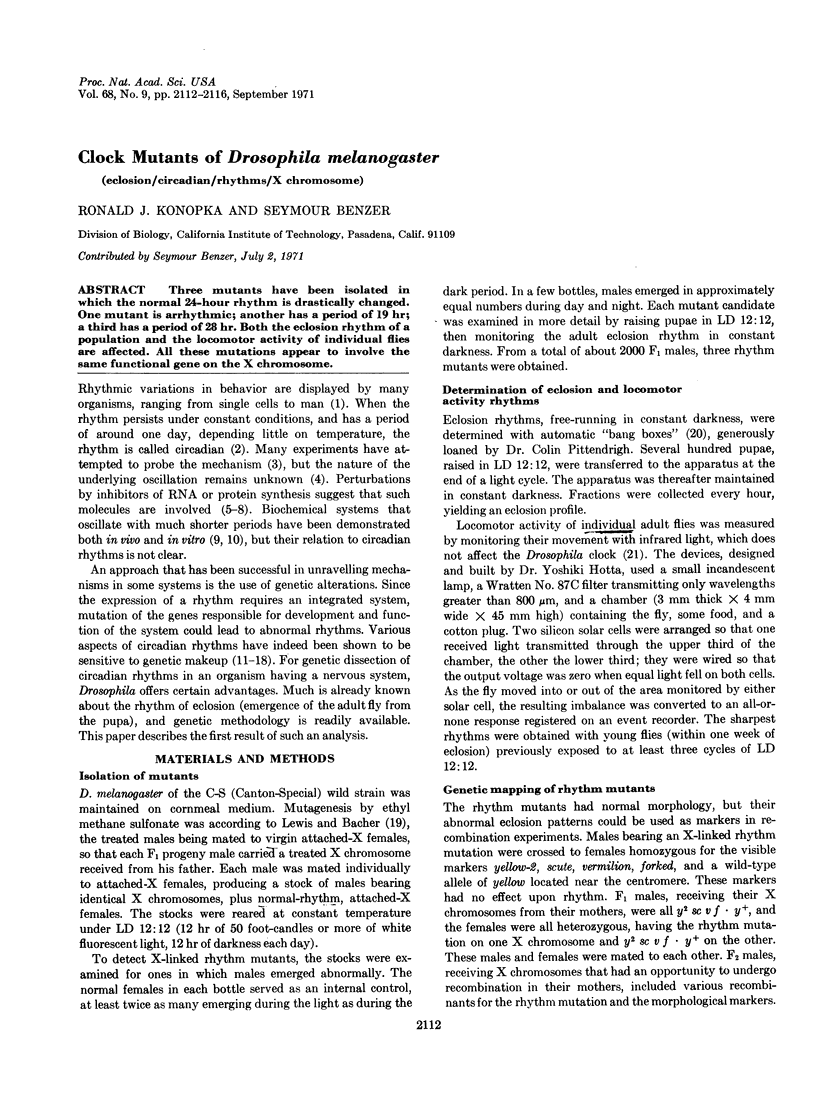
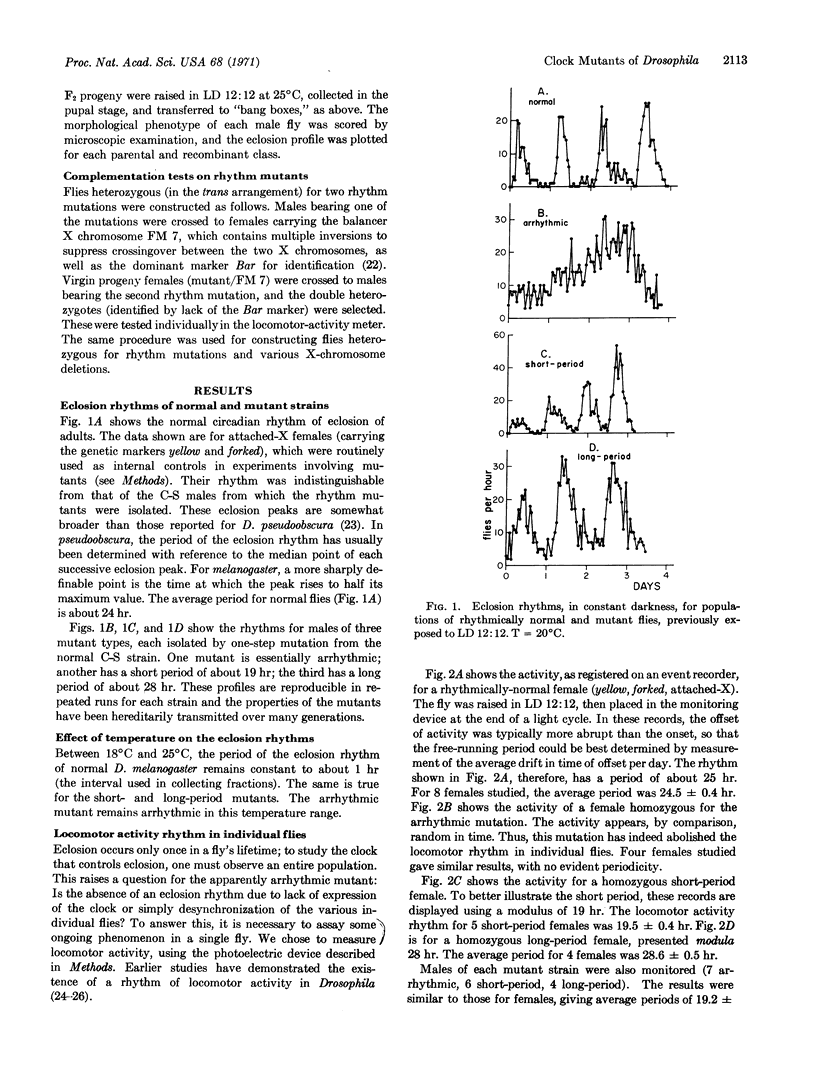
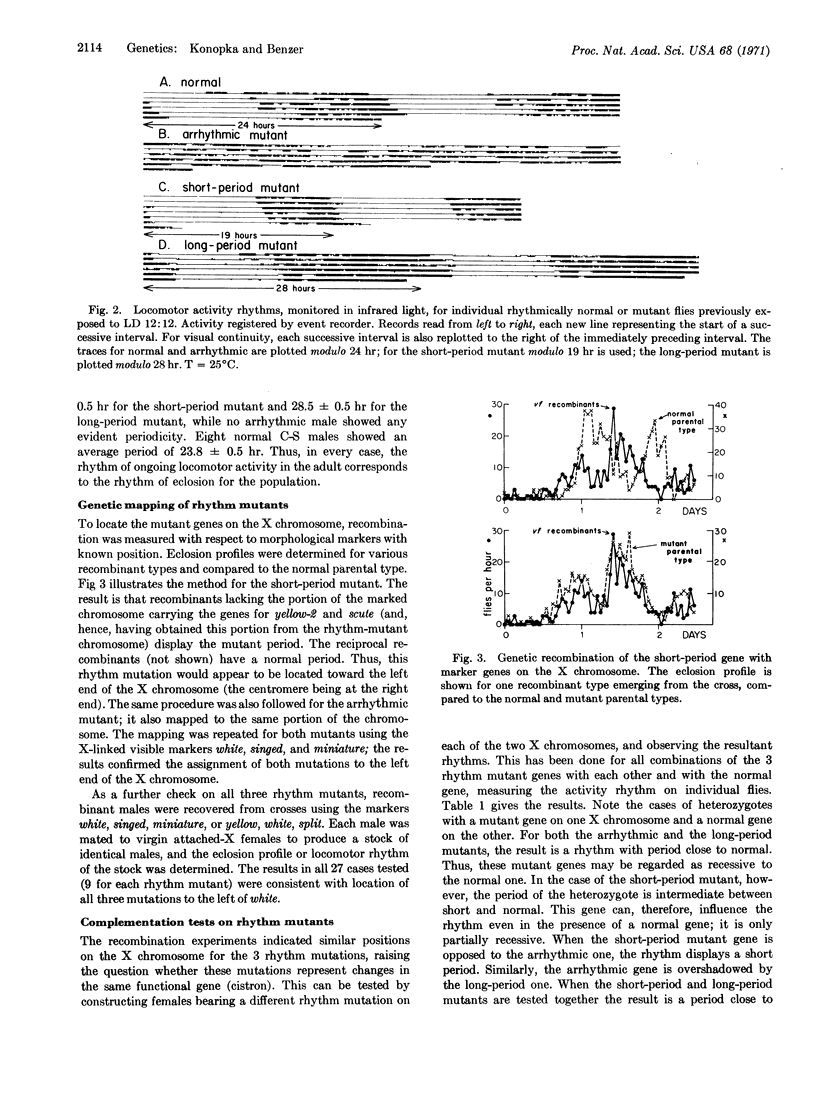
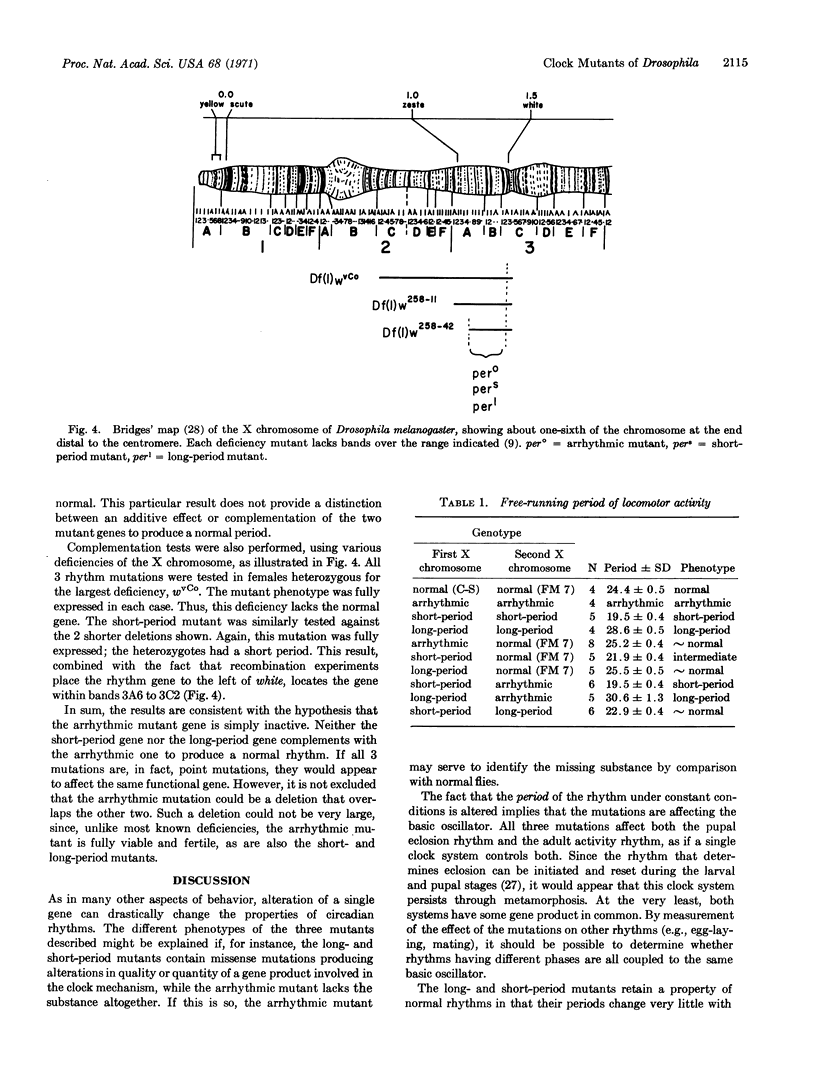
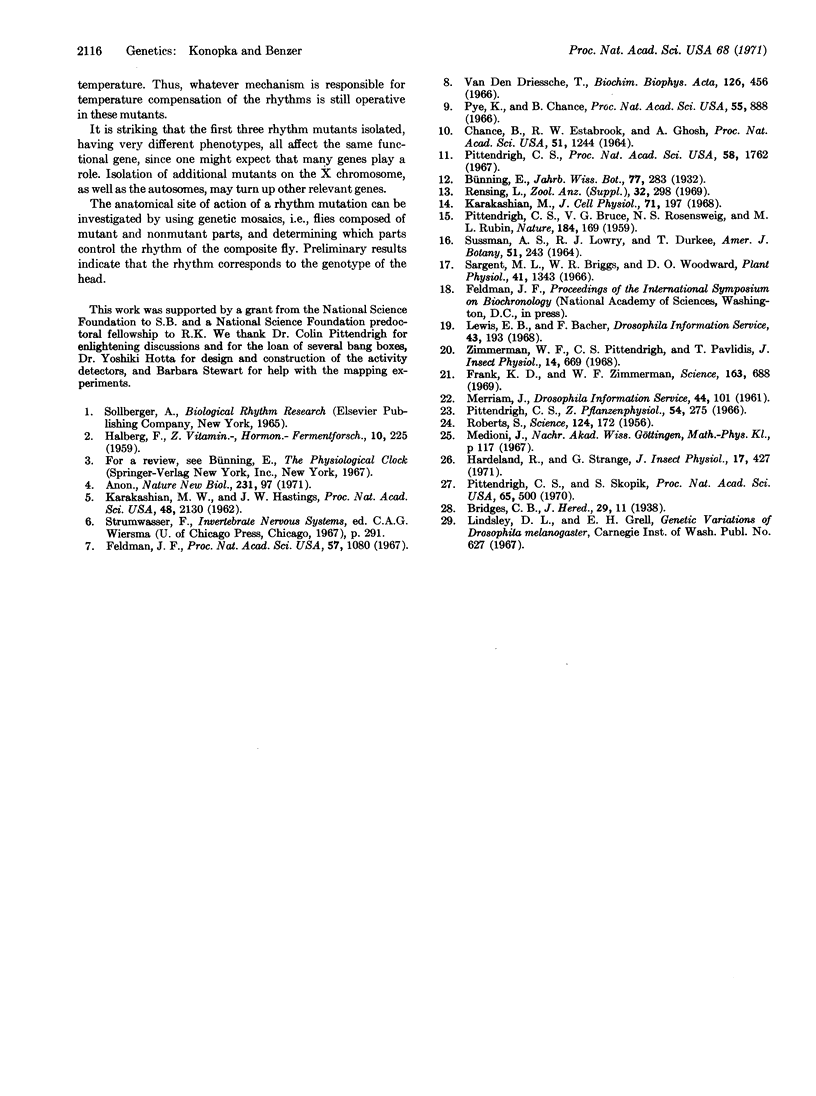
Selected References
These references are in PubMed. This may not be the complete list of references from this article.
- CHANCE B., ESTABROOK R. W., GHOSH A. DAMPED SINUSOIDAL OSCILLATIONS OF CYTOPLASMIC REDUCED PYRIDINE NUCLEOTIDE IN YEAST CELLS. Proc Natl Acad Sci U S A. 1964 Jun;51:1244–1251. doi: 10.1073/pnas.51.6.1244. [DOI] [PMC free article] [PubMed] [Google Scholar]
- Feldman J. F. Lengthening the period of a biological clock in Euglena by cycloheximide, an inhibitor of protein synthesis. Proc Natl Acad Sci U S A. 1967 Apr;57(4):1080–1087. doi: 10.1073/pnas.57.4.1080. [DOI] [PMC free article] [PubMed] [Google Scholar]
- Frank K. D., Zimmerman W. F. Action spectra for phase shifts of a circadian rhythm in Drosophila. Science. 1969 Feb 14;163(3868):688–689. doi: 10.1126/science.163.3868.688. [DOI] [PubMed] [Google Scholar]
- KARAKASHIAN M. W., HASTINGS J. W. The inhibition of a biological clock by actinomycin D. Proc Natl Acad Sci U S A. 1962 Dec 15;48:2130–2137. doi: 10.1073/pnas.48.12.2130. [DOI] [PMC free article] [PubMed] [Google Scholar]
- Karakashian M. W. The rhythm of mating in Paramecium aurelia, syngen 3. J Cell Physiol. 1968 Jun;71(3):197–209. doi: 10.1002/jcp.1040710303. [DOI] [PubMed] [Google Scholar]
- Pittendrigh C. S. Circadian systems. I. The driving oscillation and its assay in Drosophila pseudoobscura. Proc Natl Acad Sci U S A. 1967 Oct;58(4):1762–1767. doi: 10.1073/pnas.58.4.1762. [DOI] [PMC free article] [PubMed] [Google Scholar]
- Pittendrigh C. S., Skopik S. D. Circadian systems. V. The driving oscillation and the temporal sequence of development. Proc Natl Acad Sci U S A. 1970 Mar;65(3):500–507. doi: 10.1073/pnas.65.3.500. [DOI] [PMC free article] [PubMed] [Google Scholar]
- Pye K., Chance B. Sustained sinusoidal oscillations of reduced pyridine nucleotide in a cell-free extract of Saccharomyces carlsbergensis. Proc Natl Acad Sci U S A. 1966 Apr;55(4):888–894. doi: 10.1073/pnas.55.4.888. [DOI] [PMC free article] [PubMed] [Google Scholar]
- Roberts S. K. "Clock" Controlled Activity Rhythms in the Fruit Fly. Science. 1956 Jul 27;124(3213):172–172. doi: 10.1126/science.124.3213.172. [DOI] [PubMed] [Google Scholar]
- Sargent M. L., Briggs W. R., Woodward D. O. Circadian nature of a rhythm expressed by an invertaseless strain of Neurospora crassa. Plant Physiol. 1966 Oct;41(8):1343–1349. doi: 10.1104/pp.41.8.1343. [DOI] [PMC free article] [PubMed] [Google Scholar]
- Vanden Driessche T. The role of the nucleus in the circadian rhythms of Acetabularia mediterranea. Biochim Biophys Acta. 1966 Nov 8;126(3):456–470. doi: 10.1016/0926-6585(66)90005-7. [DOI] [PubMed] [Google Scholar]
- Zimmerman W. F., Pittendrigh C. S., Pavlidis T. Temperature compensation of the circadian oscillation in drosophila pseudoobscura and its entrainment by temperature cycles. J Insect Physiol. 1968 May;14(5):669–684. doi: 10.1016/0022-1910(68)90226-6. [DOI] [PubMed] [Google Scholar]


